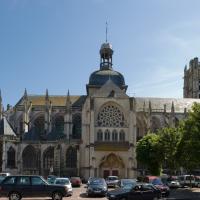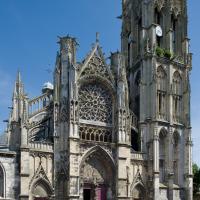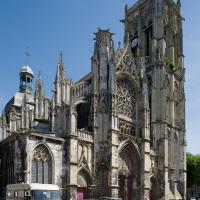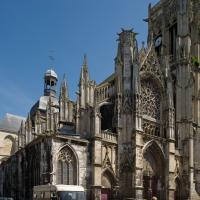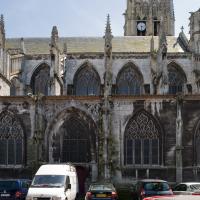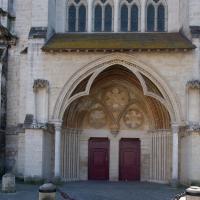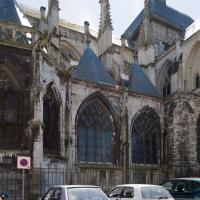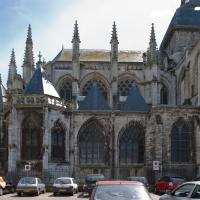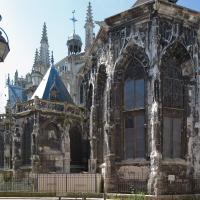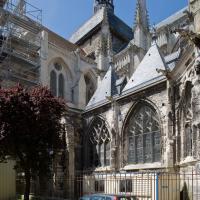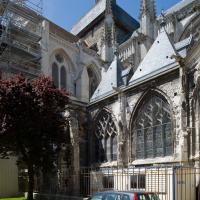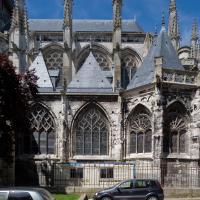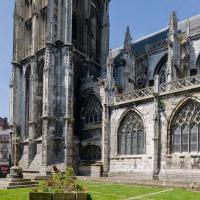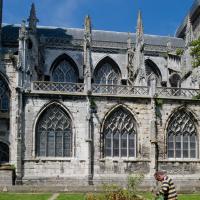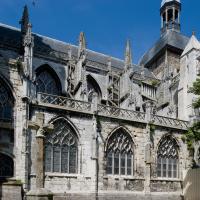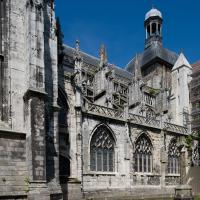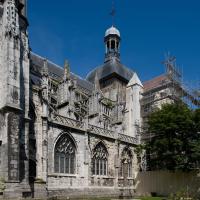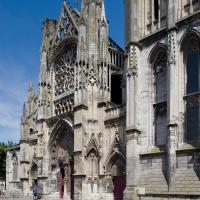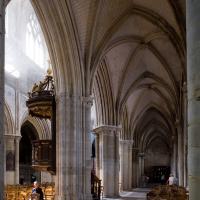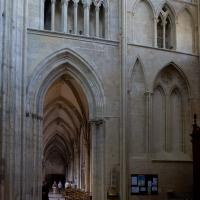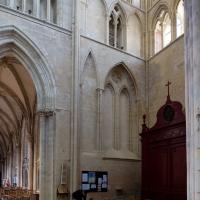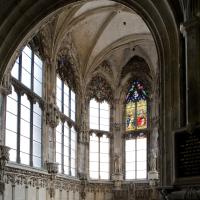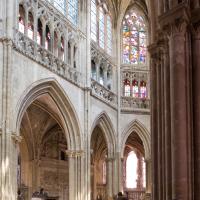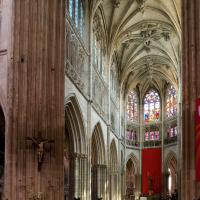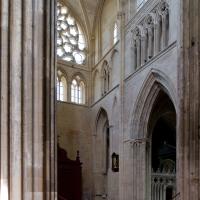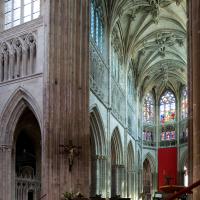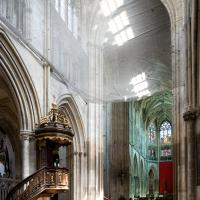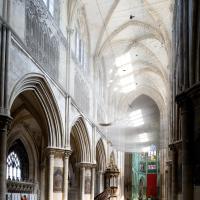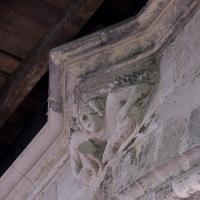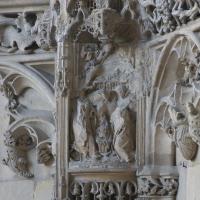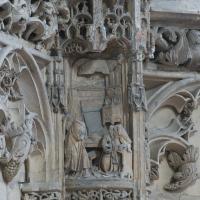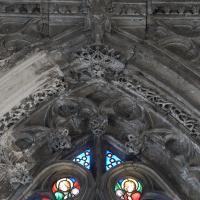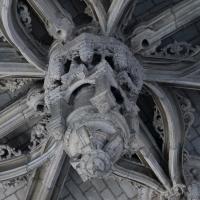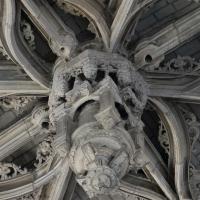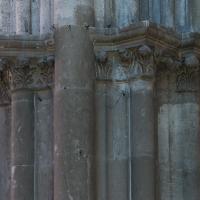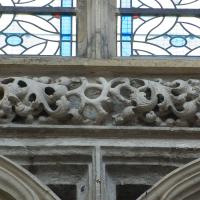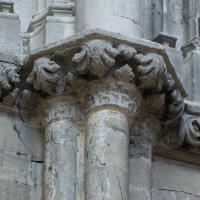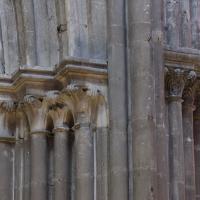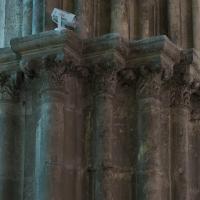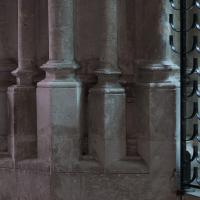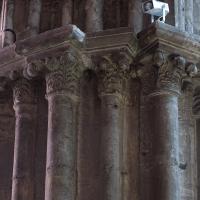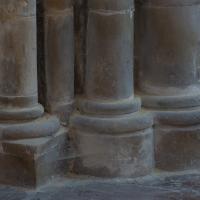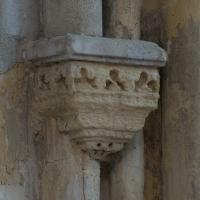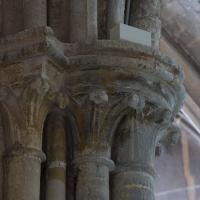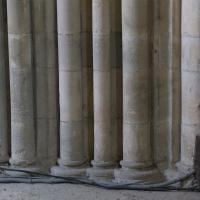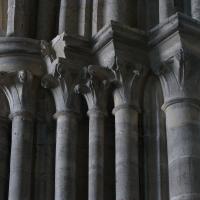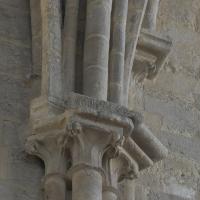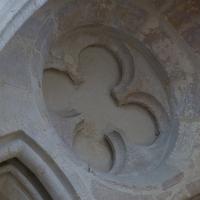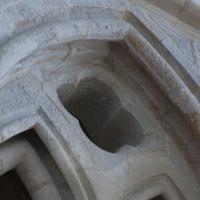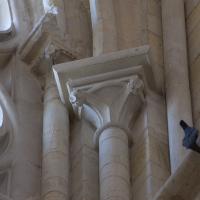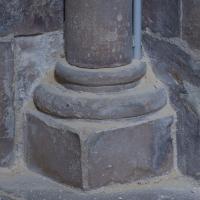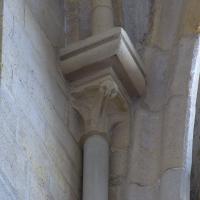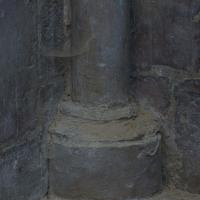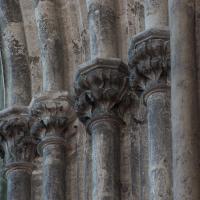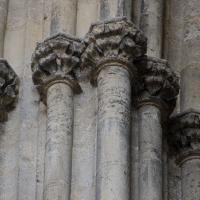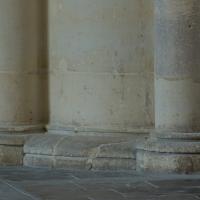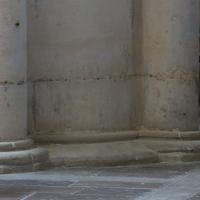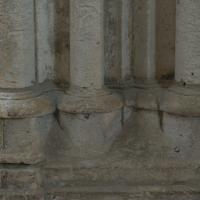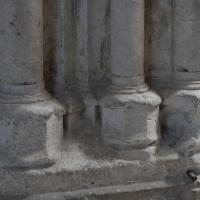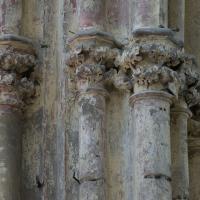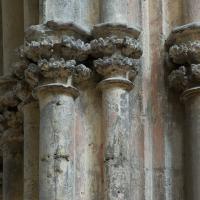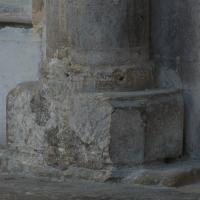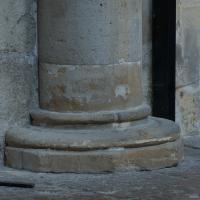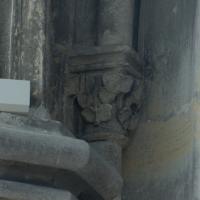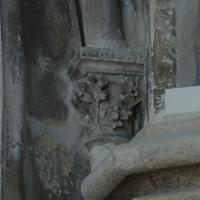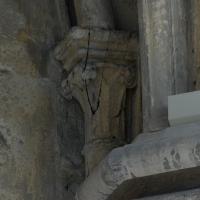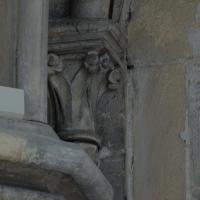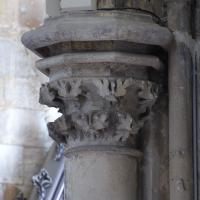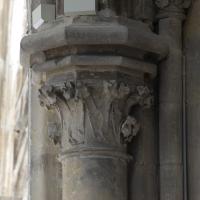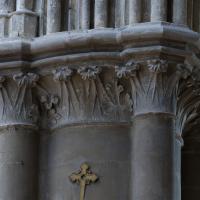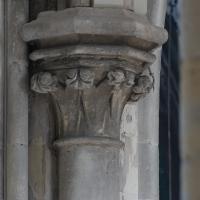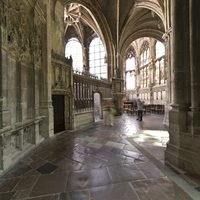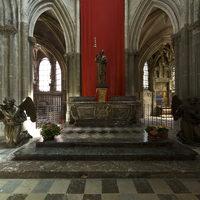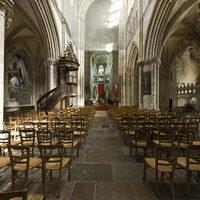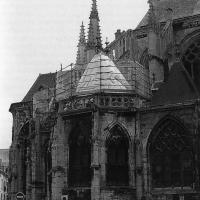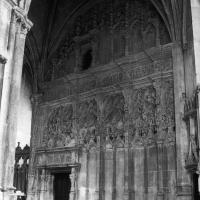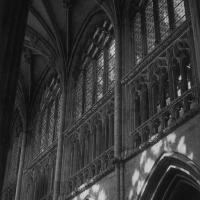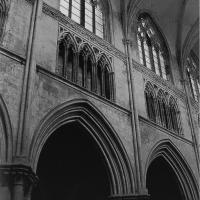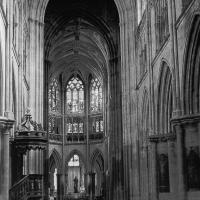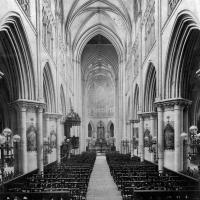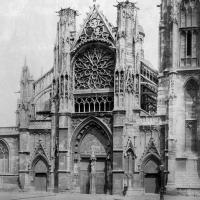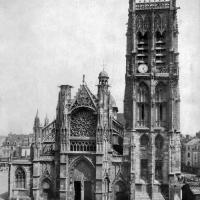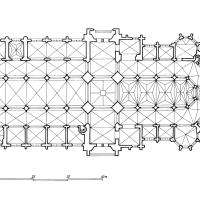Images
VR Tour
Notes
History
Little is known of Dieppe before the eleventh cetury. The fortified town with its command of navigation on the river Arques as well as its important role in Channel shipping, assumed importance after the Norman Conquest: an earlier parish church of S-Jacques presumably belongs to this period. In 1188 Henry II began work on a new château; written sources also suggest construction work on S-Jacques. However, the town was attacked and burned by the French in 1195.
Date
Begun ca. 1191
Plan
A six-bay nave is flanked by aisles extending into lateral chapels. A great tower has been inserted on the south side of the western frontispiece. The crossing extends into non-projecting transept arms and the three-bay chevet is terminated with a five-segment hemicycle with ambulatory and radiating chapels.
Elevation
Interior spaces are articulated with a three-story elevation: arcade, triforium (glazed in nave and chevet.) Different approaches to the design of the triforium, as well as the diffent kinds of pier (compound in the chevet, piliers cantonnés in the nave) and window tracery bear witness to construction campaigns from the late 12th to the sixteenth centuries.
Chronology
The oldest parts are in the transept arms with their towers to the east. Visible in the interior north transept arm is a dark triforium articulated with tightly-pointed arches assigned by some scholars to the late-twelfth century church. After the conquest of Normandy in 1204 the church was rebuilt. The choir arcade with its complex compound piers and crockety capitals comes first, from the early 13th century. The nave was constructed slowly, probably reaching the upper parts by the mid-13th century: this work is visible in the eastern bays.. Work on the western frontispiece from the 14th century appears to have been interrupted by the Hundred Years War. The central tower collapsed in 1339, prompting a radical rebuild of the adjacent bays. In the 14th (1340-46) century chapels were added between the culées of the nave: the first one from 1346 was founded by Beaudoin Eude. After the end of the Hundred Years War, in the second half of the fifteenth century, a great tower was added on the south side of the western frontispiece and the choir was refurbished with a new glazed triforium, clerestory, vaults and chapels and the crossing space was once again consolidated.
Significance
The architectural forms of the church document shifting responses to design in response to prototypes in Rouen (the cathedral and S-Ouen) as well as "high Gothic" monuments like Reims and Amiens Cathedrals (piliers cantonnés). As in our Rouennais monuments S-Jacques provides a rich study in the inventiveness of early-fourteenth century designers in the continuing play on the geometric forms of "Rayonnant" window tracery.
Location
Bibliography
Bottineau-Fuchs, Y., Haute-Normandie gothique, Paris, 2001, 126-139.
Cochet, abbé Jean-Benoît, Les églises de l'aronndissement de Dieppe, Brionne: Le Portulan, 1972
Deshoulières, François, Dieppe, Petites monograpies des grands édifices de la France, Paris, 1929
Legris, A., L'église Saint-Jacques de Dieppe: notice historique et descriptive, Dieppe, 1918.


